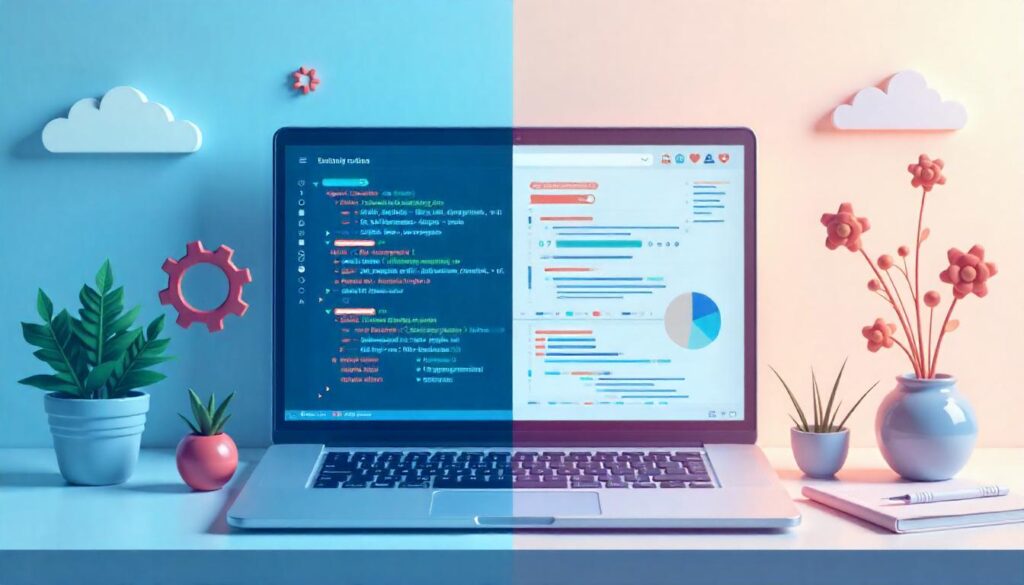
In today’s hyper-connected world, knowing how to build for the web isn’t just a cool skill — it’s a superpower. From online stores to social networks and beyond, web development is the engine behind most of what we do online. With the demand for skilled developers rising, it’s no surprise that a wide range of courses has popped up to help people learn the ropes. But with so many options, where do you even begin?
Let’s walk through it together.
Getting to Know Web Development
Before you choose a course, it helps to understand what web development actually involves. There are three main areas to know:
1. Front-End Development:
This is all about what users see and interact with on a website — the visuals, layouts, buttons, animations, and so on. If you’ve ever admired a sleek, responsive webpage, you’re looking at a front-end developer’s handiwork.
Some key tools you’ll learn here include:
- HTML – the building blocks of a webpage’s structure
- CSS – styles things up with colors, fonts, spacing, and layout
- JavaScript – adds interactivity, like animations or dropdown menus
- Frameworks/Libraries – like React, Vue.js, or Angular, which help speed things up and keep your code organized
2. Back-End Development:
This is the behind-the-scenes engine. Back-end developers manage the data, servers, and logic that make everything run smoothly when you click around a site.
Typical back-end skills include:
- Languages like Python, Node.js, Java, PHP, and Ruby
- Databases such as SQL or MongoDB to store user info and other data
- Frameworks like Django, Flask, Laravel, or Express.js to help structure your projects
3. Full-Stack Development:
Think of full-stack developers as jacks-of-all-trades — they know both front-end and back-end and can build a whole web app from start to finish. It’s a flexible and in-demand path.
Choosing the Right Course for You

Once you’ve got a sense of the web dev world, the next step is picking a course that fits your needs and learning style.
1. Know Yourself: How Do You Learn Best?
- Beginner or more advanced? Total newbie or already know a bit of code?
- Do you prefer structure or flexibility? Bootcamps offer structure and accountability, while online courses let you move at your own pace.
- What’s your goal? Are you switching careers or just adding skills to your current role?
2. Look at the Course Content
- Does it cover the basics: HTML, CSS, JavaScript?
- Is it focused on front-end, back-end, or full-stack?
- Are there real projects involved to build your portfolio?
- Is the material up to date with today’s technologies?
3. Consider the Format and Support
- Online Platforms (like SMK Grafix, Coursera, Udemy, edX, Codecademy): Great for flexibility, affordability, and breadth of topics. Many offer certificates.
- Bootcamps: More intense and hands-on, often with career support. They can be expensive but may offer job guarantees or payment plans.
- University Courses: Good if you’re looking for a deeper academic foundation.
- Mentorship & Community: Having people to learn with (or ask questions to) makes a huge difference. See if the course includes access to forums, Slack groups, or mentors.
4. Think About Budget and Value
- Free Resources: There are incredible free platforms like smkgrafixCreativeStuio, freeCodeCamp, Khan Academy, W3Schools, and IBM SkillsBuild.
- Paid Options: From affordable one-off classes to full-scale bootcamps. Consider what you’re getting: career support, job placement, certifications, etc.
Top Course Providers to Check Out

For a Broad Learning Experience:
- SMK Grafix – Huge library. Visit “The Web Developer with WordPress” by Faisal Masood & Usman Ashir’s courses.
- Udemy – Huge library. Try “The Web Developer Bootcamp” by Colt Steele or Rob Percival’s courses.
- Coursera – Offers professional certificates from Meta, IBM, and university-led programs.
- edX – Similar to Coursera, with courses from places like Harvard and W3C.
For Hands-On, Interactive Learning:
- Codecademy – Interactive and beginner-friendly with guided paths.
- Mimo – Fun, bite-sized lessons with a gamified feel.
For Budget-Friendly or Free Learning:
- freeCodeCamp – Free, project-based, and includes certifications.
- Mozilla Developer Network (MDN) – A goldmine of tutorials and documentation.
For Immersive, Career-Focused Training:
- Bootcamps like General Assembly, Le Wagon, Nucamp, and CareerFoundry offer in-depth, fast-track training — perfect for those serious about landing a job quickly.
Your Next Steps
Wherever you’re starting from, remember this: web development is a journey. It’s about building, breaking things, learning from mistakes, and staying curious. Start with the basics, take your time, build cool stuff, and keep learning as the industry evolves.
With the right mindset and course, you’re not just learning a skill — you’re opening doors to new opportunities, creative projects, and even a new career.
